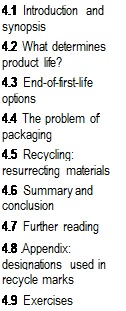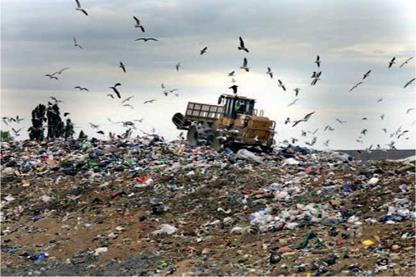|
|
|
4.1 Introduction and synopsis
When stuff is useful, we show it respect and call it material. When the same stuff ceases to be useful, we lose respect for it and call it waste. Waste is deplorable, and it is much deplored, that from packaging particularly so. Is it inevitable? The short answer is yes; it is a consequence of one of the inescapable laws of physics—that entropy can only increase. A fuller answer is yes, but. The but has a number of aspects. That is what this chapter is about.
First, a calibration. We (the global we) are consuming materials at an ever-faster rate (Chapter 2). The first owner of a product, at end of life, rejects it as "waste." So waste, too, is generated at an ever-growing rate. What happens to it? In five words: landfill, combustion, recycling, reengineering, or reuse. That sounds comprehensive; it must be feasible to find a home for cast-off products in one of these? Ah, but. The capacity of a channel for dealing with products at end of first life must, to be effective,
 Is this waste or is it a resource? (Image courtesy Envirowise—Sustainable Practices, Sustainable Profits, a U. K. government program managed by AEA Technology Plc.)
Is this waste or is it a resource? (Image courtesy Envirowise—Sustainable Practices, Sustainable Profits, a U. K. government program managed by AEA Technology Plc.)
match the rate of rejection. Only one of the five has any real hope of achieving this goal. And then there is the economics. End of life is not simple.
To start at the beginning: why do we throw things away?


